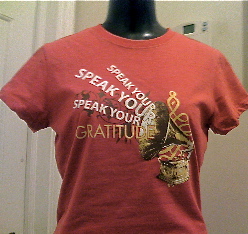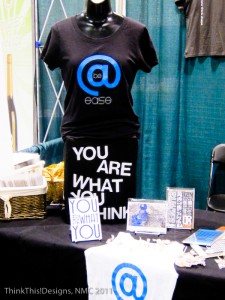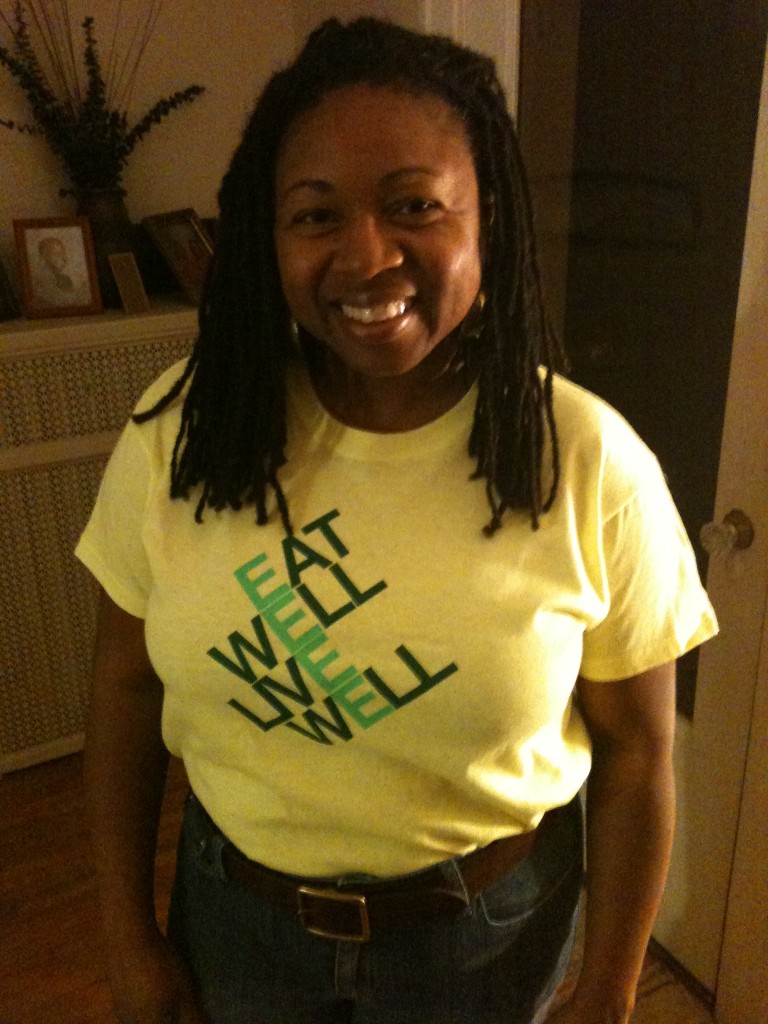We all need encouragement: A look from a different perspective; time spent with a friend; an uplifting message on a card or even a t-shirt, like these:

I know you think they’re fabulous and I’m giving away three, compliments of ThinkThis! Designs, whose proprietor and designer is my best friend, Nichole M. Christian. I told you a little about her last year here on the blog but have not told you about her company of t-shirts, greeting cards and journals with inspiring messages. A natural storyteller and frequent t-shirt wearer, Nichole decided in 2009 to try her hand at blending her two loves by inscribing her thoughts on a cotton canvass, carrying her words beyond the page and immediately into the hearts of all who read them.
“I never sat out intentionally to start a t-shirt brand, but I had a great opportunity to share my message. And I love t-shirts,” Nichole said. “The opportunity came at a moment in my life when I needed that (Fear < Hope) message and so I put it on a t-shirt as a reminder to me. I didn’t set out to do anything but to remind myself of a message of what I was faced with in my own life.” The time Nichole speaks of is when she found out she was being laid off as an editorial board writer for the Detroit Free Press. “I printed the shirt three weeks before being laid off and wore it in the newsroom. People asked me about it. By the time I got laid off I had already sold a case of shirts.”
[caption id="attachment_3082" align="aligncenter" width="300" caption="Nichole (left) w/Lori Robinson"] [/caption]
[/caption]
With other messages to herself sketched in her journals, she decided to transfer those to t-shirts and ThinkThis! Designs was born. I’m not a t-shirt wearer so initially Nichole gave me a complimentary shirt to hook up her girl. Of course I was willing to wear it to help advertise my friend’s business, but since that time I have purchased a few more and find myself in at least two of my four ThinkThis! Designs each week because of the comfort, style and spiritual inspiration of each. To help three of you begin your love affair with ThinkThis! Designs, I’m giving away the Eat Well, Live Well shirt.
For your chance at a t-shirt, just 1) subscribe to the blog (if you haven’t already) and leave a comment on the blog by stating 2) how you have been living (or plan to live) better by a change in your diet and 3) which Friday Feature has inspired you the most and 4) why. Nichole will select the three winners, who will be announced on the blog next Friday.
To see more ThinkThis! t-shirt designs, cards and journals and to purchase merchandise, go to www.thinkthisdesigns.com.
Copyright 2011 by Rhonda J. Smith





